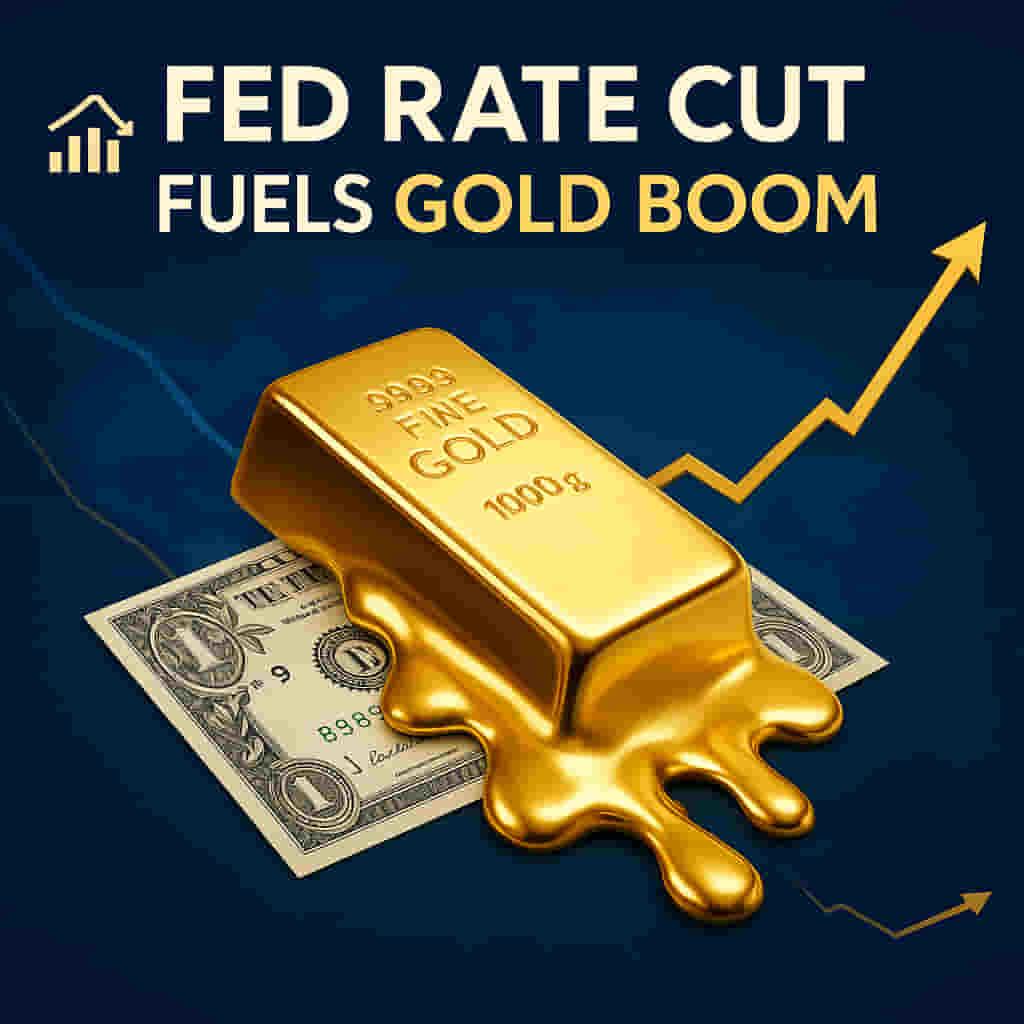US Federal Reserve Rate Cut Strengthens Gold Prices, Investors Watch Trade Talks
Commodities
|
30th October 2025, 3:46 AM

▶
Short Description :
Detailed Coverage :
The United States Federal Reserve announced a reduction of its benchmark interest rate by 25 basis points, setting the target range between 3.75% and 4.00%. This marks the second rate cut of the year and aligns with market expectations. Following the decision, the US dollar index experienced a decline, making gold, which is priced in dollars, more affordable for international buyers and thus boosting its appeal. Spot gold prices saw a modest increase of 0.4%, although US gold futures for December delivery slipped slightly due to profit-taking. Fed Chair Jerome Powell indicated that future monetary policy decisions would be data-dependent, advising caution against anticipating immediate further rate cuts. Gold's status as a safe-haven asset is amplified during periods of low interest rates, as it becomes more attractive compared to fixed-income investments that offer lower yields. Market attention is now shifting towards the upcoming meeting between US President Donald Trump and Chinese President Xi Jinping, where trade issues will be discussed. Additionally, progress has been made on a US-South Korea trade deal. Holdings in the SPDR Gold Trust, the world's largest gold-backed exchange-traded fund, decreased slightly, which can signal investor profit-booking or asset reallocation. Other precious metals, including silver, platinum, and palladium, also recorded price gains.
Impact The Federal Reserve's rate cut provides a supportive environment for gold prices by lowering borrowing costs and reducing the opportunity cost of holding non-yielding assets like gold. This, coupled with a weaker dollar, generally drives gold prices higher. However, ongoing global trade developments and any signals regarding future US monetary policy could introduce volatility. Rating: 7/10
Difficult Terms: Basis point: A unit of measure used in finance to describe the percentage of a percentage. One basis point is equal to 0.01% (1/100th of a percent). A 25-basis point rate cut means the rate was reduced by 0.25%. Benchmark overnight rate: The interest rate at which commercial banks lend reserve balances to each other overnight. The Federal Reserve adjusts this rate to influence broader interest rates and economic activity. Dollar index: A measure that compares the value of the US dollar against a basket of major world currencies. A falling dollar index typically makes gold cheaper for holders of other currencies. Exchange-traded fund (ETF): An investment fund traded on stock exchanges, much like stocks. SPDR Gold Trust is an ETF that holds physical gold, allowing investors to gain exposure to gold prices without holding the physical commodity. Spot gold: Refers to gold that is available for immediate delivery at the current market price. Futures: Financial contracts where parties agree to buy or sell an asset at a specified price on a future date. Gold futures allow investors to speculate on or hedge against future price movements of gold.